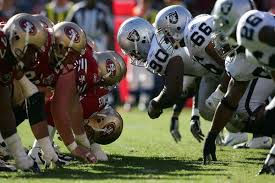The Legacy of the Position: Dolphins, Interior Offensive Line
- David Hegler

- Apr 25, 2023
- 4 min read

While the needs vary each year, the NFL Draft brings hope and optimism to every single franchise. Many view this hope as being for the fortunes of the franchise and in a lot of ways they are correct. New faces to the organization can spark championship dreams. But there is another kind of hope that needs to be discussed. The hope is that player lives up to the standards set before him by those who once stood in his shoes for the franchise. According to numerous reports, including Pro Football Focus, the Miami Dolphins need help on their interior offensive line. Let's take a look at their illustrious history of the position and the standards that have already been set.
The Lineage

From their very beginning, the Miami Dolphins have boasted some of the finest offensive linemen to ever grace the landscape of the NFL. When the franchise was first established, their very first center was Tom Goode. In just a few short years, he would be the unsung hero of Super Bowl V as the Colt's long snapper, but in Miami he was still a dependable every-down offensive lineman. He earned team MVP honors in 1967 and was invited to the Pro Bowl in 1969, his last year as a Dolphin and right when Don Shula left Baltimore for Miami. Like ships passing in the night, the two great football men would soon see some of the league's most legendary moments.
Seeing a talented but underperforming team before his eyes, Don Shula began to build his offensive line around right guard Larry Little, signing free agent left guard Bob Kuechenberg in 1971 and drafting center Jim Langer the following year. Arguably one of the best interior offensive lines in NFL history, each of these men were invited to six Pro Bowls while Little was named All-Pro five times, Langer was named All-Pro three times and Kuechenberg was named All-Pro once.
Together, they paved the way for the Dolphins' perfect season in 1972 as their ground attack dominated every opponent they met that year. Every Sunday, opponents would not only fear the brute strength of Larry Csonka and fleet-footed Mercury Morris, but the fierce, unforgiving play of the offensive line blowing open holes all over the line of scrimmage. Discipline was the name of the game and the Dolphins expressed that trait in abundance.
While both Langer and Little would eventually find their bronze busts in Canton, Kuechenberg was more of the unassuming grinder, working diligently throughout the game and never quite getting the recognition that he deserved. He was also one of the toughest offensive linemen in league history. He broke his arm late in 1973 and with the playoffs looming elected to play in an inflated cast. It did the trick and he helped lead the team to their second straight Super Bowl triumph. In Super Bowl VIII, he played so well against Vikings' defensive great Alan Page that the normally cool Page ended up taking a swing at him and was promptly ejected from the game.
As the 1970's came to a close, both Langer and Little hung up their cleats while Kuechenberg stayed on for several more years. He was there for some serious transition within the franchise including one of their best draft-day steals, Dwight Stephenson.

Taken in the second round of the 1980 draft out of Alabama, Dwight Stephenson quickly became the new face of the Miami Dolphin's offensive line. Instead of large and plodding, he was small and agile. Those natural skills came in handy blocking the pass rushers that wished to fly past Stephenson and his comrades on their way to Dan Marino, the most electric passer of his time.
By the time his career ended in 1987, Stephenson had been to five Pro Bowls and was named All-Pro four times. Despite his short career, Dwight Stephenson was inducted into the Pro Football Hall of Fame in 1998.
Unfortunately for Dan Marino, he never had a 1,000-yard rusher in his arsenal until late in his career. Karim Abdul-Jabbar recorded that number in 1996, the back end of Keith Sims' career. Sims was a three-time Pro Bowl left guard for the Dolphins in the mid-1990s.
Lined up next to Sims was Tim Ruddy, the Dolphins' center when Dan Marino retired in 1999. He really stepped up as a leader in 2000 and was invited to his only Pro Bowl.
More than a decade later, the Dolphins drafted Mike Pouncey, a combo center-right guard from Florida that had won two national championships while blocking for Tim Tebow and his high-flying, well-balanced attack. While the Dolphins only made it to the playoffs once in his time in Miami, Pouncey still made three Pro Bowls before retiring after the 2020 season alongside his twin brother, Maurkice.
The Standard
Here is where we stand. The Dolphins enjoyed quite a resurgence in 2022, with Mike McDaniel calling all the right plays for his loaded offense. But the offensive line began to crumble down the stretch and consistently put quarterback Tua Tagovailoa in danger. He ultimately didn't play in the playoffs because of the injuries he sustained late in the year. The Dolphins don't have a pick until the 51st, so they'll have some trouble drafting the top prospects. Who will they draft? Will they pick Matthew Bergeron, the tackle-guard combo from Syracuse? Or will they select John Michael Schmitz, the center from Minnesota? We shall see this weekend.



Comments